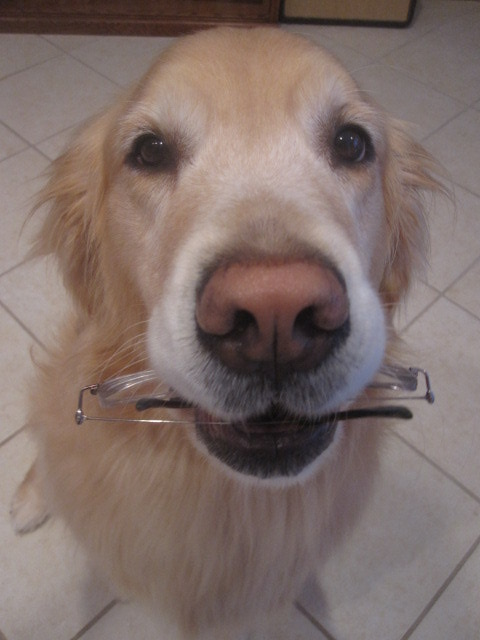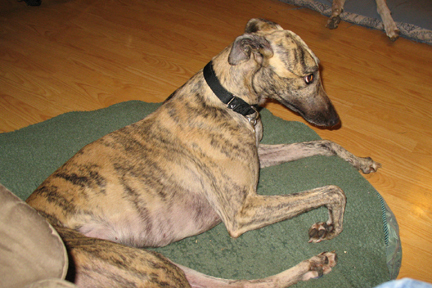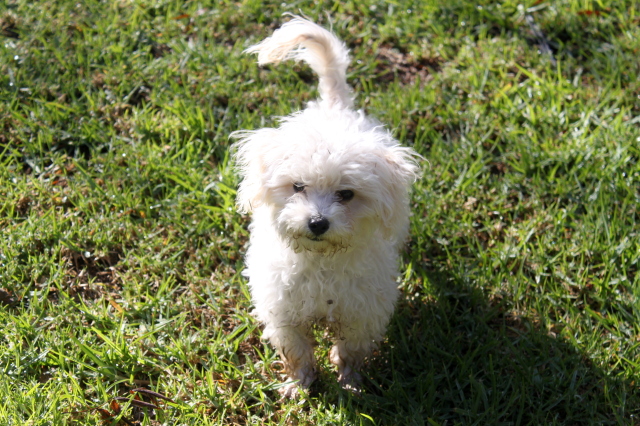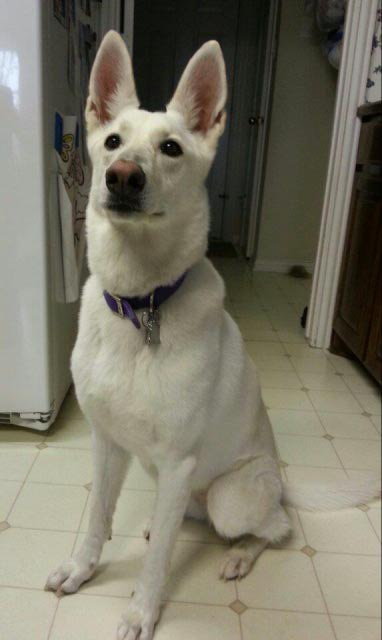QuestionI have a one year old (just turned one) german short-haired pointer. I feel that we have socialized him well, and with other dogs he is always fine. However,with certain people he can be very unsure. Sometimes he just tucks his tail and other times he may bark or even growl a little. He is very very sweet and we have done training classes with him, so he is very good about listening to us. He has never shown agression, but how can I make him more comfortable around people?...what is the best way for people to approach him? I take him to public places often and some people he seems fine with right away, but for whatever reason not with others?? Is part of it his age, and just that he needs to build more confidence in himself over time?? I would appreciate any advice!! Thank You!!
AnswerGreetings, and thank you for contacting All Experts!
German Short hair pointers do generally well with strangers and warm up to them generally after being introduced. The fact he is becoming unsure at this time is not at all unusual if we look at his age. Indeed between the age of 6 to 14 months dogs undergo a second fear period (the first one took place when the dog was between 8 to 11 weeks old).
You can read more about this in this website:
http://www.diamondsintheruff.com/developmentalstages.html
Upon noticing his hesitancy it is best to ignore the whole situation without engaging in reassuring behaviors such as petting him or baby talking him with an ''aawwwh, it's ok''. Doing so would be like telling him it is okay to be frightened and you are only reinforcing the behavior in approval.
Sue St. Gelais, gives a great insight about this critical period and I like to quote it here because it gives an invaluable perspective that in my opinion is a great portray of what goes on in a dog's mind during this time:
''Second fear impring period ''from 6 to 14 months''
It occurs as dogs enter adolescence and seems more common in males. It is often referred to as adolescent shyness. Your dog may suddenly become reluctant to approach something new or suddenly become afraid of something familiar. This behavior can be very frustrating to the owner and difficult to understand because its onset is so sudden and, seemingly, unprovoked. If you notice this behavior, it is important to avoid the two extremes in response: Don't force him to do or approach something frightening to him and don't coddle or baby him. To get through situations that make your dog fearful, be patient, kind, and understanding. Desensitize him to the object or situation by gradually introducing him to it and using food rewards and praise to entice him to confront the fearful object or situation. Do not coddle or reassure him in any way that will encourage his fearful behavior. Do not correct him either. Simply make light of it and encourage him give him food rewards as he begins to deal with his fear better. Make sure you lavishly praise his attempts! This phase will pass.''
Here is the reference link to this excerpt:
www.nmhpkc.org/winograd/dogs/Puppy_Development.pdf
In order to help your dog therefore you must work under the threshold (you do not want to force him to feel uncomfortable) so you must find a distance from where he does not react and work from there. I will provide you with a good behavior modification program I have used with success in helping dogs with similar problems divided in easy steps.
1)Make safety your top priority, keep your dog muzzled if you fear he may bite and invest in training tools that give you good control of your dog. I like to use an ''Easy Walk Harness'' by Premier. This harness has a front attachment that helps prevent pulling and lunging behaviors.
2)Start by investing in the tastiest treats your dog knows. These are 100 dollar treats, treats your dog would die for, examples are slices of hot dogs, freeze dried liver, steak, boneless, skin less chicken,oven cooked chicken livers..Keep small bits of these treats handy by putting them in a fanny pack or treat pouch that goes around your waist.
3) Now work on this exercise: make a sound with your mouth, anything, a whistle, a smacking noise, just not words. Place a treat at your eye level and as soon as your dog looks at you, give the treat. Repeat-repeat-repeat. The sequel is as such: you make sound with your mouth with treat at eye level/dog makes eye contact/you give treat. Do it 10-15 times until your dog gets a hang of it. Timing is of the essence: the second he looks at you the treat is delivered.
4) At some point something wonderful will happen: your dog will look up at you in the eyes automatically when you make the noise in anticipation of the treat. By doing this you have taught your dog to focus on you using classical conditioning. Now you can apply this exercise successfully to change a bit his attitude around people and this is how:
5)Find the people you know he may be unsure of and walk him from a distance you know he will not react. Start making the noise with your mouth and feed a treat every time your dog looks up at you after you noticed your dog acknowledged the people but without reacting. You want to do this often enough so to change your dog's emotional state from ''Oh, no a stranger I do not like..growlllll, barkkk barkkk'' to ''Oh, a stranger, owner where's my treat, where's my treat?''
6) Work on this exercise until it is crystal clear in your dog's mind that when he sees people he gets the treat but when the people are gone all the treats are also gone. Strangers bring good things! As he gets better at this and feels more comfortable, start decreasing the distance very gradually and continue the exercise. If your dog reacts by barking or growling, you have gone too fast for his comfort. Go a few steps back and work from there for some more time.
7) Your ultimate goal is to get him close to these people safely and having these people toss a couple of treats to him every time he crosses them. This way your dog will learn that the people bring good things and the closer he gets to them the more treats he gets. Remember to go gradually and very slowly and make safety your top priority using a muzzle if need be. This is a method recommended by Patricia McConnell in her book ''Cautious canine'', a must read for owners of fearful dogs.
You need to watch carefully also on what triggers his fearful aggressive responses. See if there is a pattern, are they mostly men? are they wearing hats? do they come to your dog too comfortably and try to pat his head? It is best if you meet people that they give no attention to your dog, no talking, no looking at him, no petting. Some dogs are very shy and prefer no interactions. Then if your dog takes initiative, you can ask people to drop a treat when you dog goes to sniff them.
You need to build your dog's confidence and training classes can be great for this. Consider clicker training and agility for building up confidence. Get him used to being around other people, by using the behavior modification program above even if he seems comfortable. When he gets good at it, have your goal to take him to the city with you or in crowded places with you and every time you cross somebody do the exercise. This should get him used to many different people and continue to learn that ALL people bring good things no matter their appearance, postures or smells.
This may take a while to take effect, but if you are consistent, you may notice some changes in his attitude towards some people. I hope this has helped, please make safety your top priority and consult with a dog behaviorist if you do not see improvements or the behaviors gets worse. My very best wishes!
Disclaimer: Please consult with a dog behaviorist if your dog is displaying aggressive behaviors. Only a dog behaviorist may see and assess behaviors and offer the most appropriate behavior modification program tailored for your dog. Use extreme caution and make safety your top priority. By reading this answer you accept this disclaimer and assume full responsibility for any of your actions.

 Chewing/Stealing
Question
Clarkie
my shih-tzu Clarkie is 21 month
Chewing/Stealing
Question
Clarkie
my shih-tzu Clarkie is 21 month
 question about beagle puppy
QuestionHello, I have recently acquired a beagle puppy.
question about beagle puppy
QuestionHello, I have recently acquired a beagle puppy.
 Adult Greyhound Howling
Question
Lisette
Hello Kathleen,
Thank you for taking
Adult Greyhound Howling
Question
Lisette
Hello Kathleen,
Thank you for taking
 Young Moodle Trouble
Question
Moodle, male, 10 - 11
I have a two question.
Young Moodle Trouble
Question
Moodle, male, 10 - 11
I have a two question.
 White German Shepherd Aggression
Question
Chloe
A little background on my dog Chl
White German Shepherd Aggression
Question
Chloe
A little background on my dog Chl